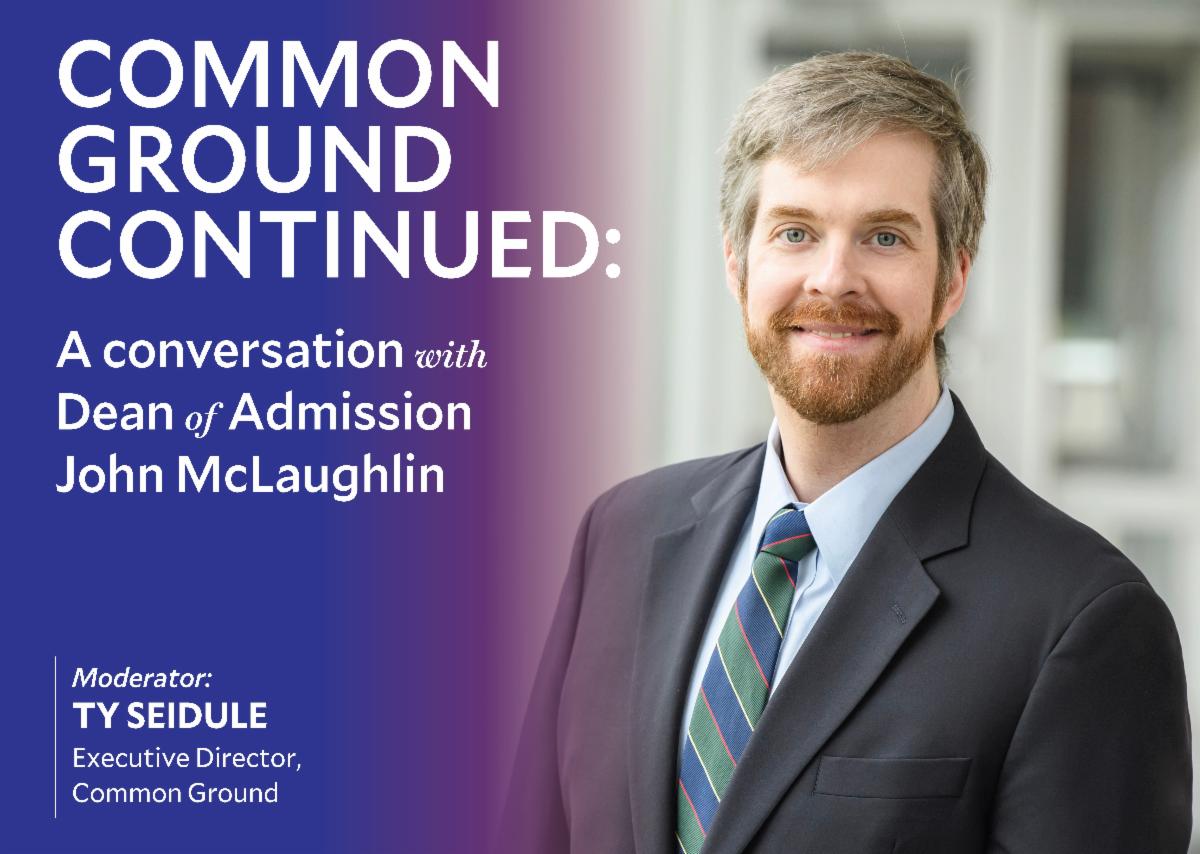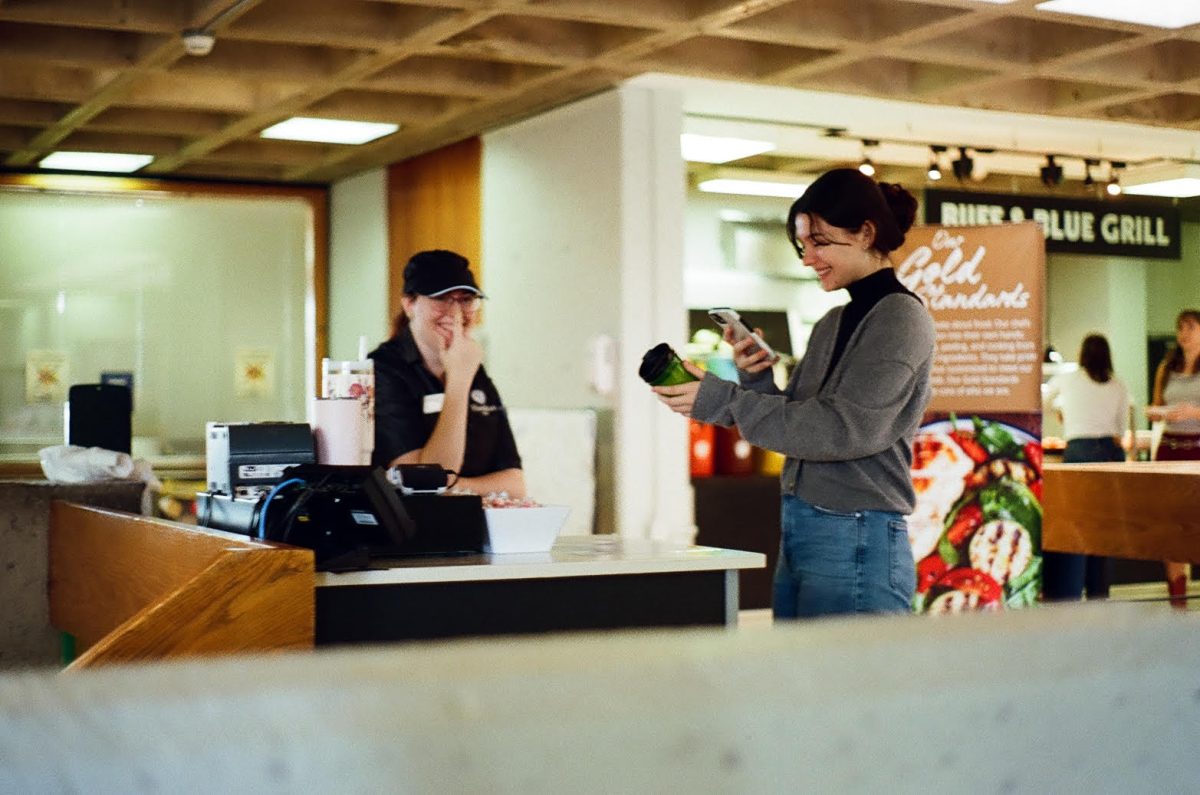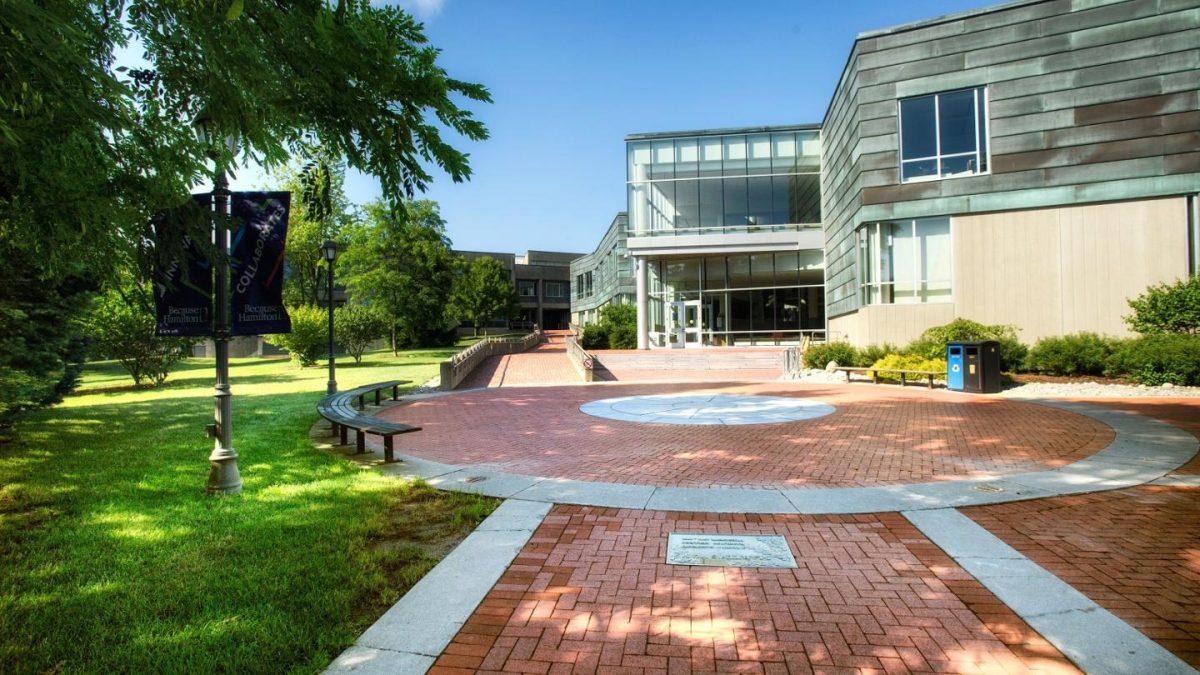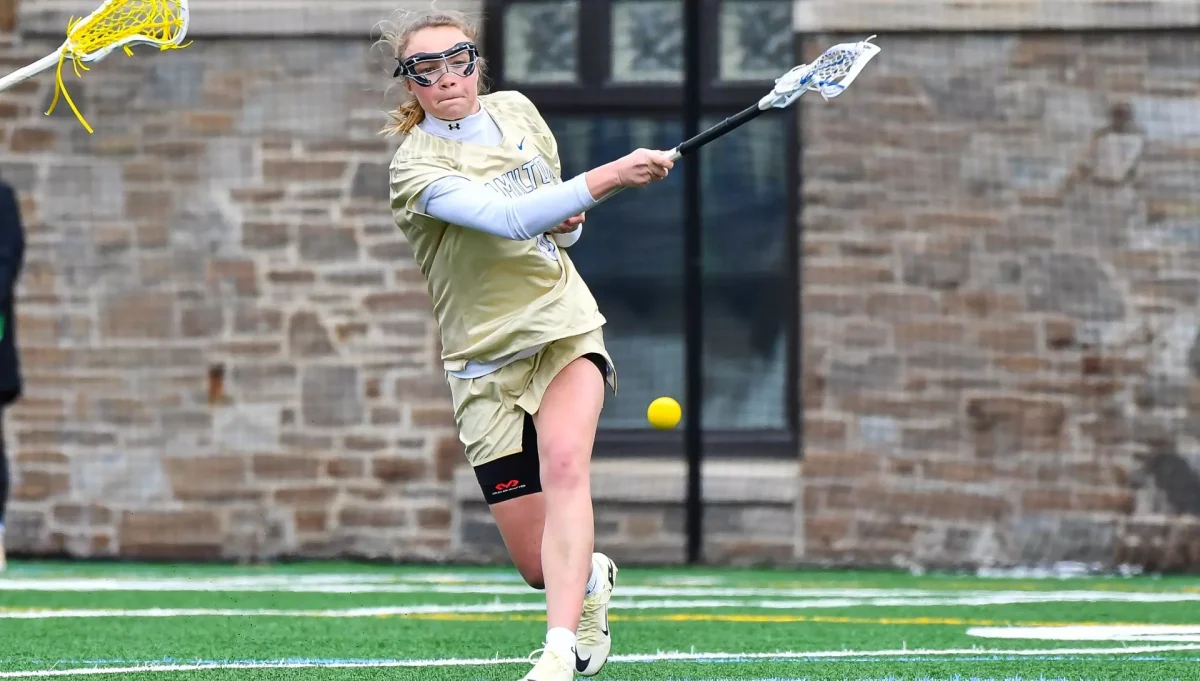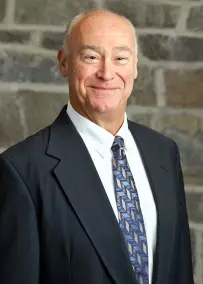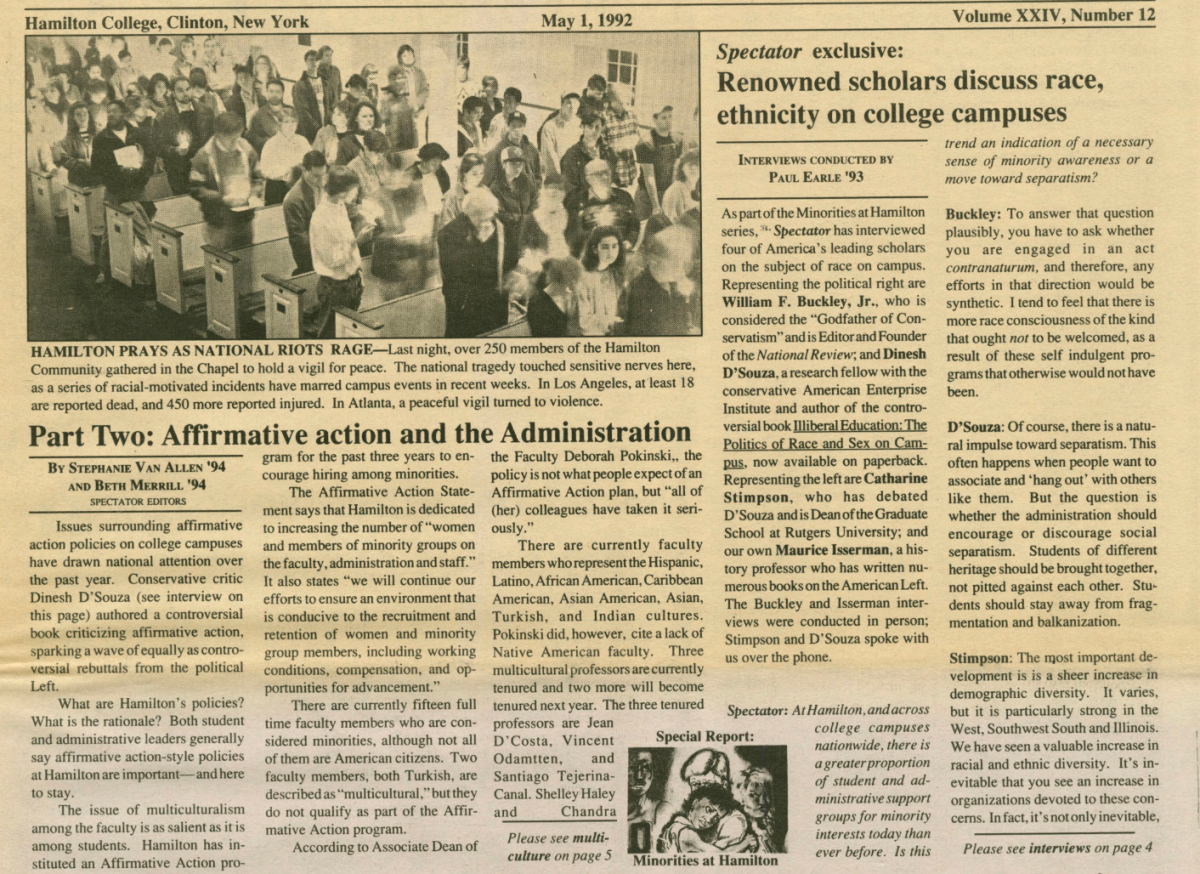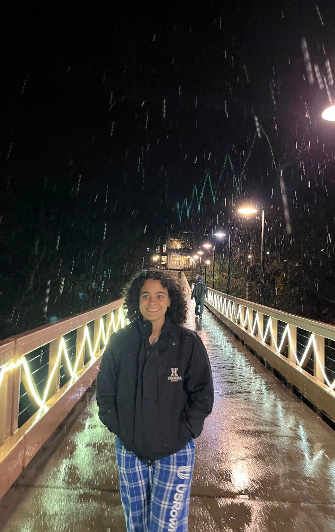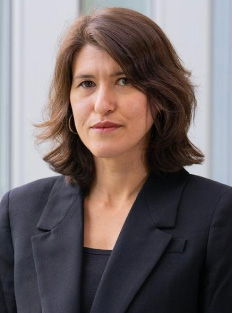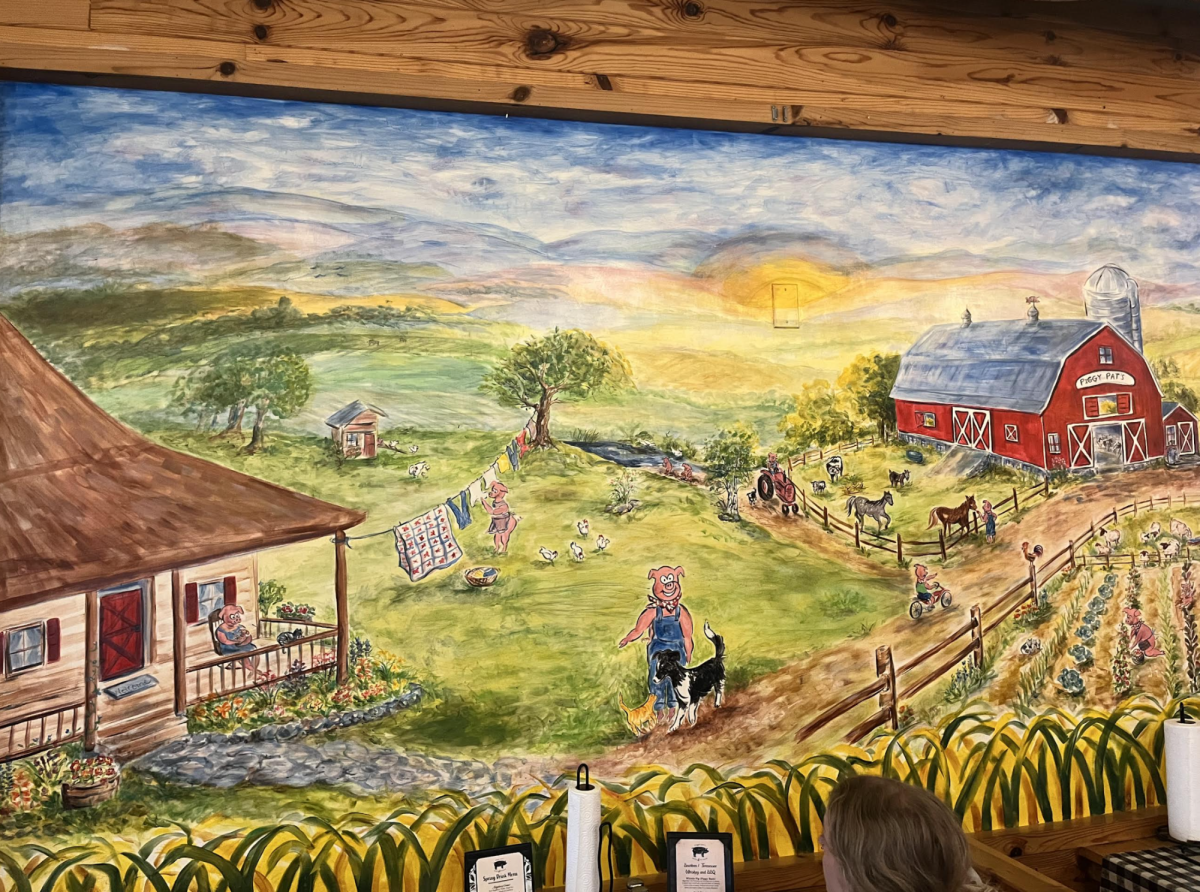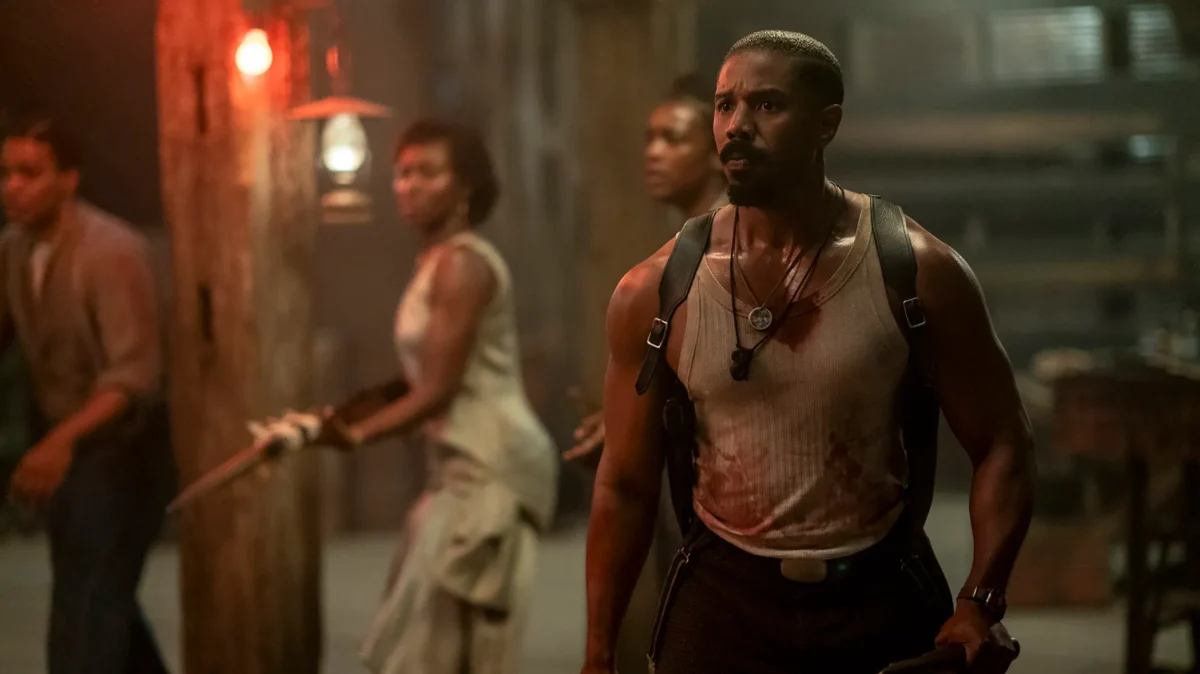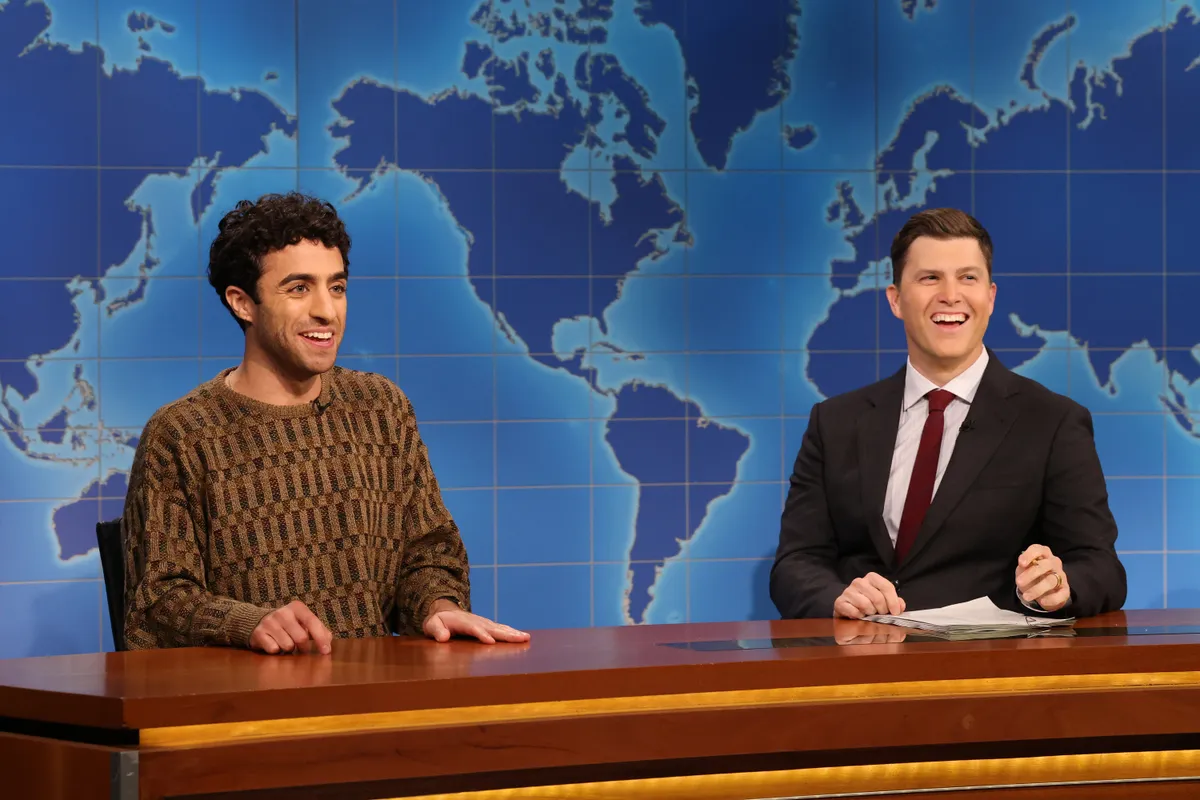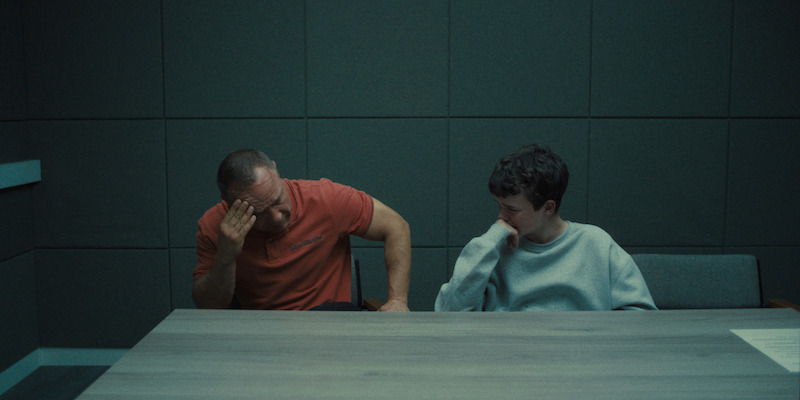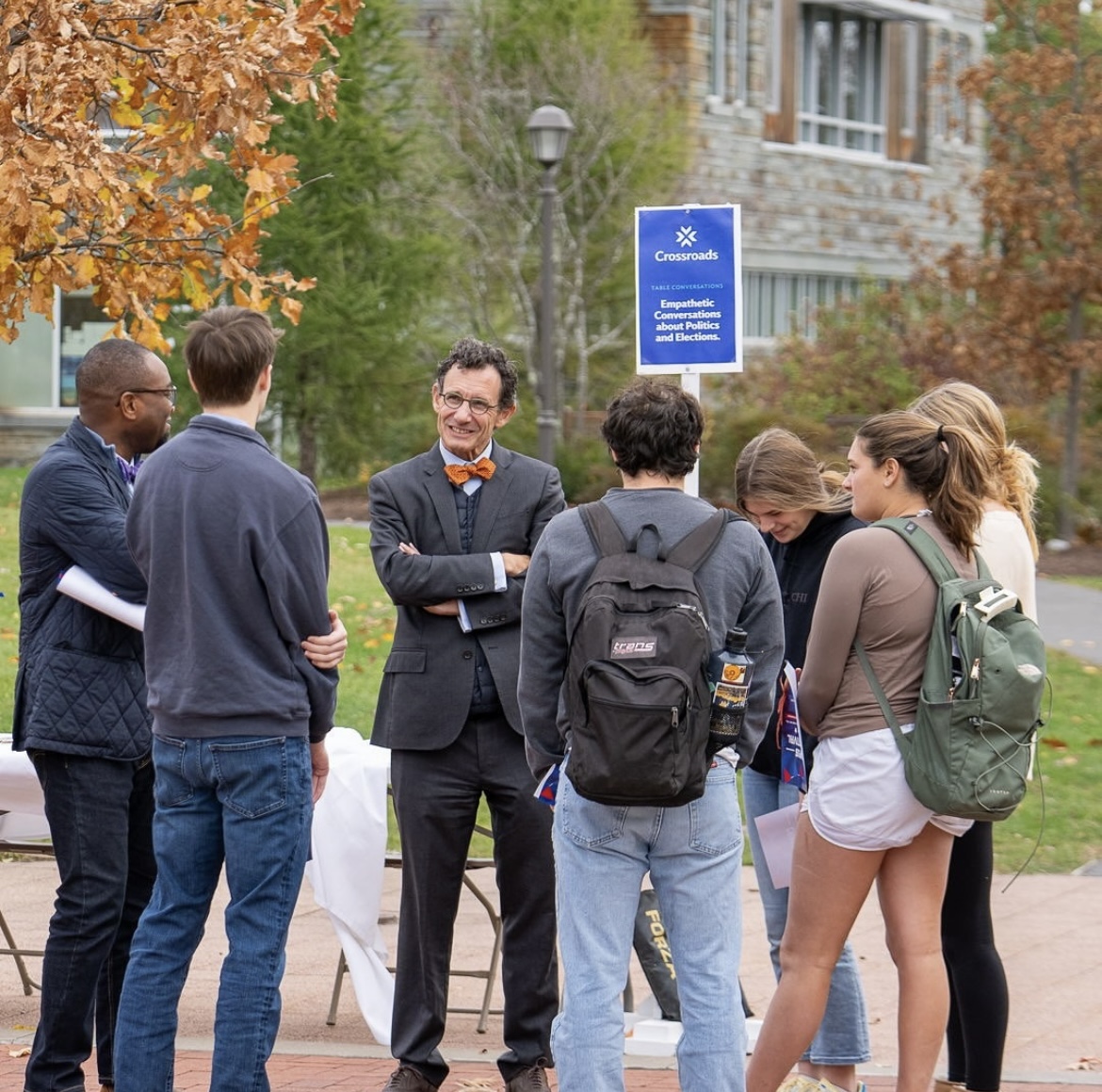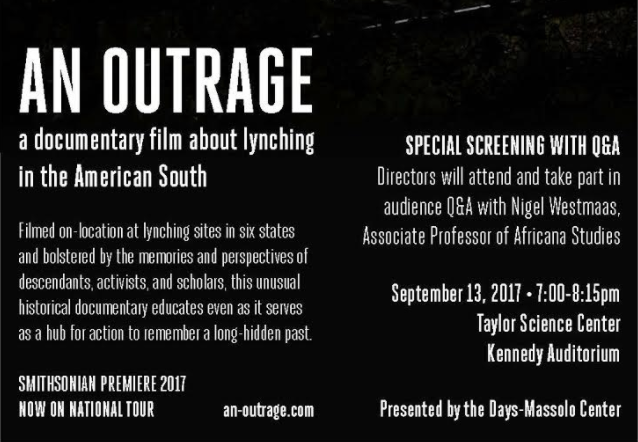
Hamilton students received a wake-up call on Wednesday night, Sept.13 in the Kennedy Auditorium with the film screening of
An Outrage
, a documentary film about lynching in the American South. Following the screening was a Q&A with the filmmakers, Hannah Ayers and Lance Warren, moderated by Africana Studies Professor Nigel Westmaas. The short documentary was filmed on-location at lynching sites in six states, and its strength lies in the memories and perspectives of descendants, community activists and scholars that propelled the film. Its purpose is to educate and prompt viewers to take action in remembrance of our nation’s long-hidden past.
The film exposes dark truths about the societal injustices and hushed horrors that color our country’s history; it sheds a light on the deeply-rooted racist sentiment that was allowed to run rampant and forge a path of destruction through the American south until the middle of the twentieth century.
The film introduces audiences to people who have been personally affected by these ‘outrages’ and live to share the often silenced stories of their affected families. Scholars and historians who have extensive knowledge of the history of this atrocious phenomenon provided viewers with historical, social, and political context to deepen their understanding of the American landscape that allowed lynching to occur as frequently and acceptably as it did.
The goal of the film is not just to educate, but to also serve as a platform for action that allows people to commemorate the battle fought by African Americans in our nation’s past that is deliberately kept a secret.
The filmmakers, Ayers and Warren, summed up the film by saying that it speaks for itself, and its power lies in the testimonies given by those directly affected by lynching through the lives of their ancestors.
In the Q&A following the short documentary, moderated by Professor Westmaas, students were eager to ask thought-provoking questions concerning the filmmakers’ motives for creating the project, the amount of research they had to do regarding the issue and hopes for the use of the film in the future. Ayers and Warren both implied that the history of lynching in the South is long and cruel and deserves to be acknowledged by the public and not forgotten.
“This is something we can’t pretend doesn’t exist,” said Ayers, touching on the gravity of the hateful and fatal crimes for the over 4,000 African Americans who were victims of documented lynchings without the protection of the government. Warren described the practice as a “tool of social control applied to anyone seen as threatening to the white supremacist society.”
One particularly striking moment from the film was its opening. The film opens with several consecutive clips and images that depict pop culture imagery from the past, incorporated by the filmmakers as a nod to the mainstream nature of lynchings, for they were often public spectacles. “We wanted to get at the deeply disturbing ordinary nature of lynching,” he continued, because people, generally, seem to be unaware of it.
As the filmmakers willingly shared their knowledge of the lynching phenomenon along with their experiences making the film, students were engaged in the conversation about finding this hidden truth and wanted to expand their knowledge in this concerning topic.
Ayers and Warren created
An Outrage
as a film that can be used by teachers and is short enough to allow for class discussion afterwards. Its purpose is educational yet action-driven, and the filmmakers urged Hamilton students to continue to educate themselves on the matter and stay aware of the brutal reality that lies beneath our nation’s surface.
As the duo continue to tour the country, screening their film at colleges and universities, students and faculty were honored to have Hamilton selected as one of the stops in which important national issues such as those focused on in
An Outrage
can be uncovered and serve to educate audiences everywhere.


